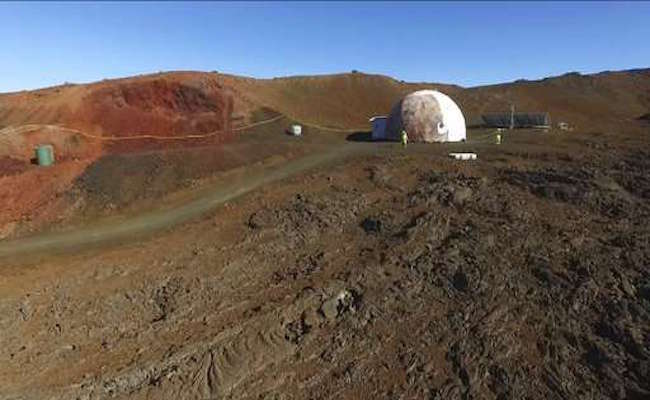The Study of Isolation in Space

Can you imagine being isolated from the world for 30 days? Would you be able to survive? How about sixty days? A team of NASA research subjects completed six months in isolation. Read on to find out how they survived and what they learned.
Six research assistants will emerge after spending six months in a small dome located at a remote location on the Mauna Loa volcano, Big Island, Hawaii. Why were they there? NASA scientists plan on sending people to Mars in several years and want to know how they will handle conditions of isolation.
Mars Simulated Landscape
How did they recreate the terrain of Mars? The Big Island of Hawaii still boasts an active volcano. The landscape terrain remains rough and barren in certain areas allowing scientists to recreate the Martian landscape. The area’s rugged, Mars-like landscape, on a rocky, red plain below the summit of Mauna Loa, helped with the experience.

NASASpacePSY
NASASpacePSYLiving Conditions
Scientists tried to give the researchers an experience as close to the living quarters they would find on Mars. Consequently, their 1200 sq.ft. home contained tight sleeping quarters, a small lab, bathroom, and kitchen. Although the researchers were not confined to the dome, they were required to put on spacesuits to go outside. Another way they kept them isolated involved dropping their food and supplies off far away from the dome. In order to get the supplies, the team sent a robot to retrieve the items. Do not think that they had pizza delivered or hot cooked meals. As a matter of fact, they consumed the same freeze-dried and canned food astronauts eat in space.
Psychological Impact
To better understand the psychological impacts that a long-term manned mission to space would have on astronauts they remained in isolation. By and large, they hope the data gathered will help NASA better pick crews that have certain traits and a better chance of doing well during a two-to-three year Mars expedition.
Daily Interaction
The Hawaii team wore specially-designed sensors to gauge their moods and proximity to other people.The devices monitored their voice levels. Furthermore, it detected whether people were avoiding one another. It could also detect if they were next to each other and arguing. The crew played games designed to measure their compatibility and stress levels. When they got overwhelmed by being in such close proximity to each other, they could use virtual reality devices to escape to tropical beaches or other familiar landscapes.
NASA researchers not only have to figure out how to get to Mars, they have to do so safely. Once a crew arrives, their survival will ultimately depend on how well they do living together. NASA plans on sending a crew in the 2030s. This goal will allow them to run several of these experiments to achieve ideal living conditions. The best scenario involves having a crew that can withstand isolating conditions similar to the what the astronauts live through on the International Space Station. With each new round of testing, they will acquire the information they need to hopefully send a crew to Mars.
